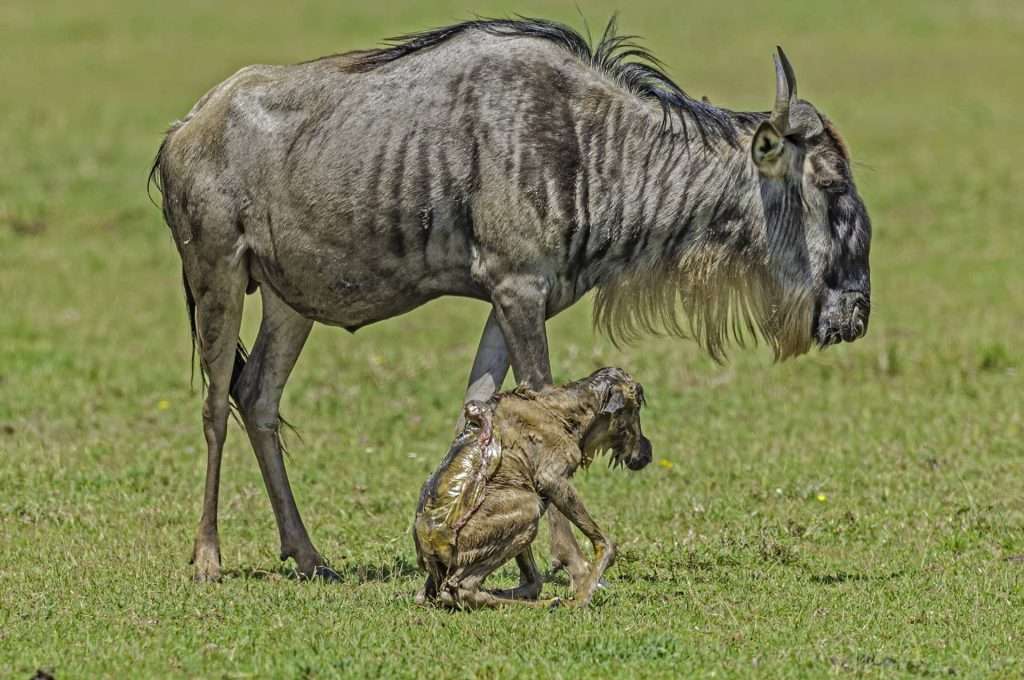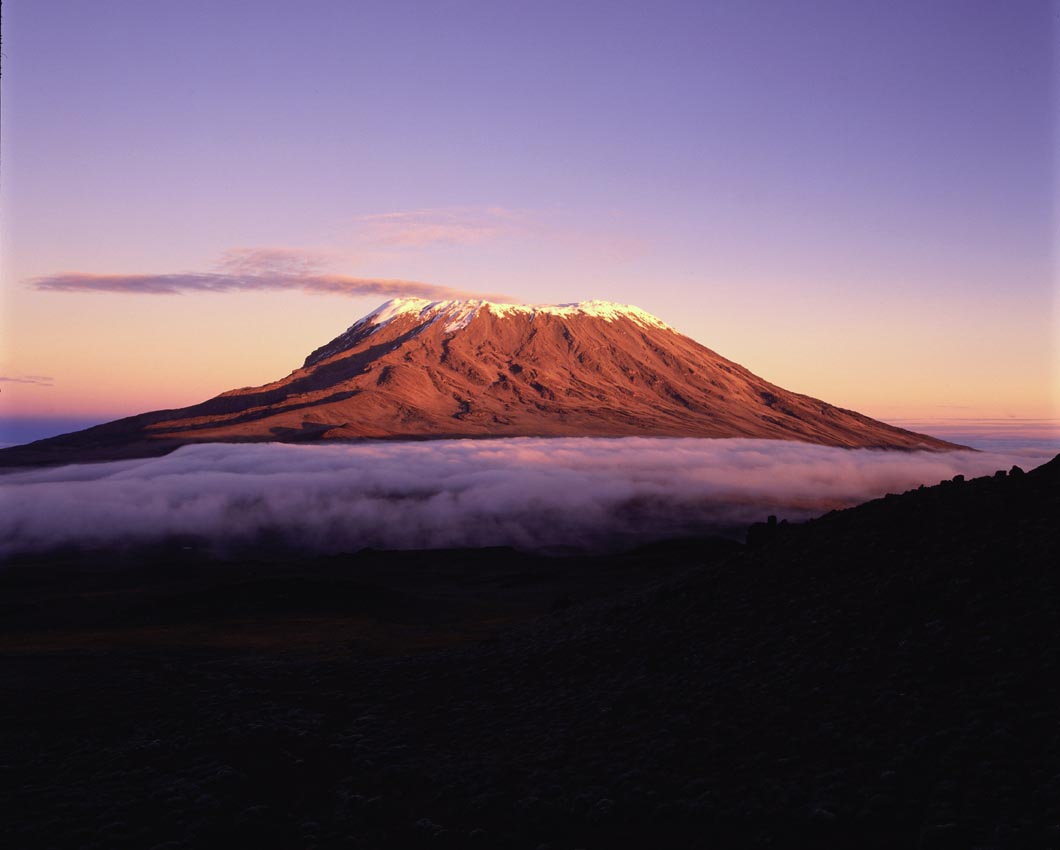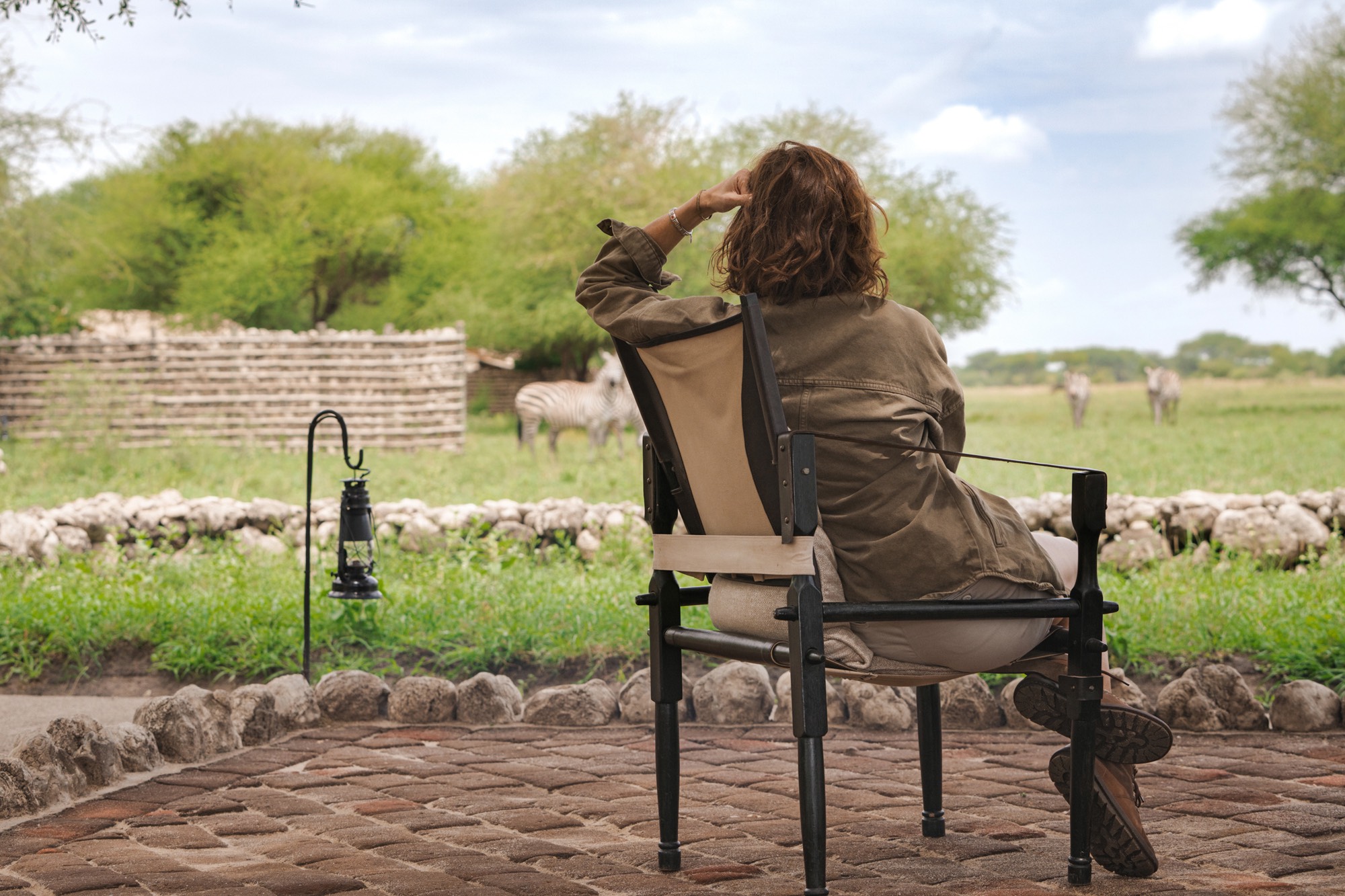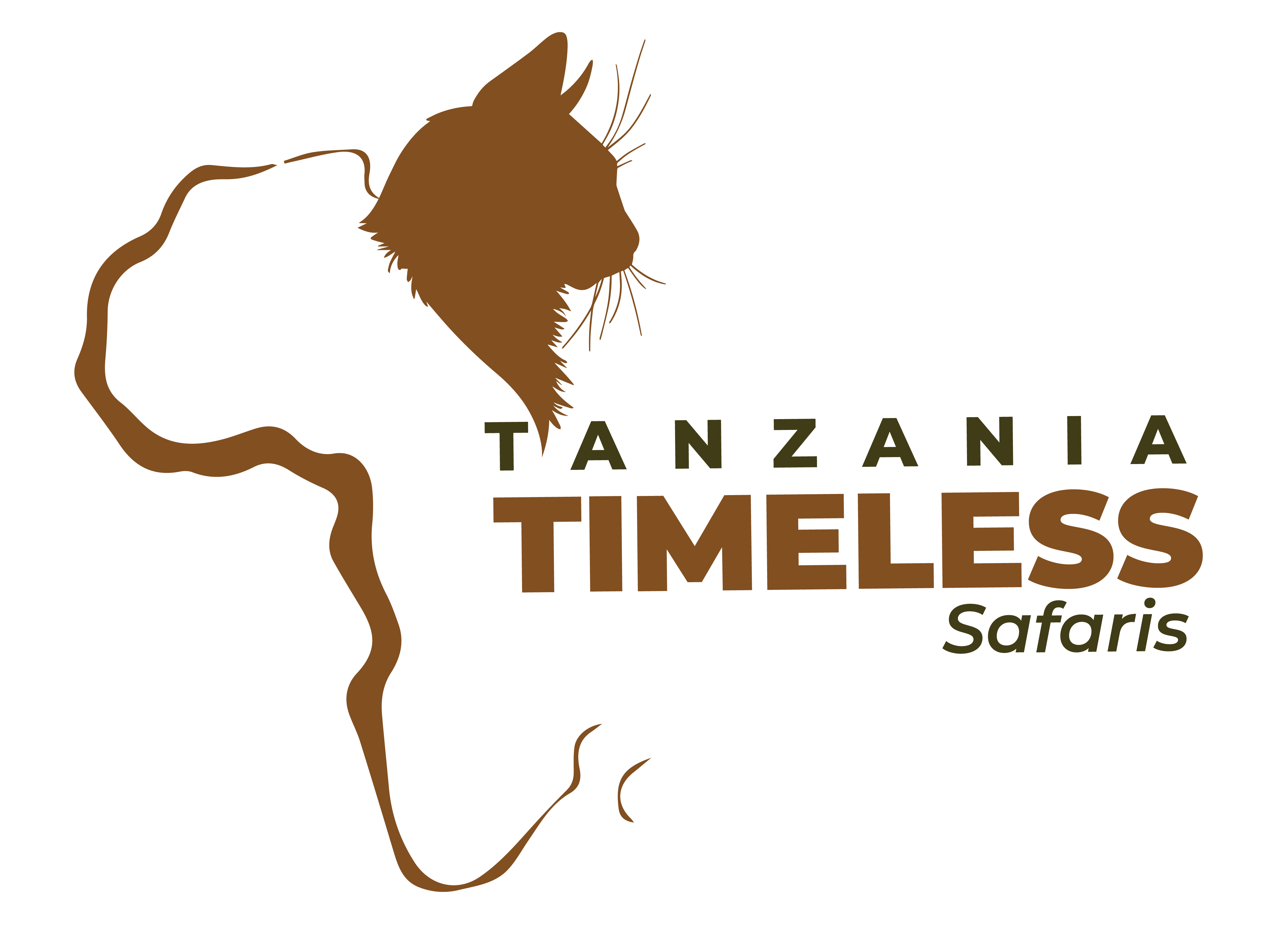TANZANIA IN FEBRUARY
Tanzania in February is prime time for wildlife sightings, with the Great Migration happening in the Serengeti. Weather is generally warm and dry, making it ideal for safari tours. This is also a good month for beach lovers as Zanzibar experiences plenty of sun. Cultural and historical explorations are also a delight during February in Tanzania.
Let’s Help You Plan
Tanzania In February: Weather, Tips, and Recommendations.
February in Tanzania brings the conclusion of the brief rainy season, leaving the surroundings vibrantly lush, a treat for the eyes. Even though you might encounter a few sporadic showers, having a raincoat ready can solve that small hiccup. The breathtaking beauty of the refreshed and vivid scenery at this time of the year is well worth it.
One of the perks of visiting Tanzania in February is the ample sunshine, offering ideal conditions for photography. The luminous sunrays enhance the overall beauty, making your captured moments splendid and unforgettable.
Concerning temperature, you might experience varied degrees depending on your location in Tanzania. If you plan on exploring the mainland, temperatures can fluctuate from a crisp 16°C – just about right to consider a light jacket, to a pleasantly warm 29°C. On the flip side, if a visit to the enchanting Tanzanian island paradises is on your itinerary, brace yourself for a hotter climate. Here, temperatures can reach a comfortable low of 23°C and can peak to a fairly hot 32°C. A handy tip would be to keep your sun protection essentials close by to protect yourself from the stronger sun.
Remember, each part of Tanzania offers its unique charm and the weather only enhances the experience. Regardless of where you will be, February promises a blend of warm temperatures, abundant sunshine, and beautiful landscapes.

Tanzania Weather In February: Travel Guide
February is a desirable time to visit Tanzania as the country, drenched recently by the short rainy season, is left beautifully lush and green. Despite the ending rainy season, expect a few scattered showers. Heavier rainfall, however, is the exception rather than the norm, giving way to the predominant sun-drenched landscapes. The advantage of this clear weather is the abundant sunshine that Tanzania receives in February, the highest average all year round, providing strong lighting and thus, fantastic conditions for photography.
When it comes to temperature, there’s quite a range depending on your location. On the mainland, it varies from a relatively cool 16°C to a pleasantly warm 29°C. If you’re venturing towards the island paradises, prepare for hotter conditions where the temperatures swing between a comfortable low of 23°C and a sizzling high of 32°C. Whether you’re in the cool highlands or the balmy beaches, packing sun protection is recommended as the tropical sun can be intense.
Tanzania Wildlife and Safari Experience In February
In February, Tanzania offers an unparalleled wildlife and safari experience, especially in regions like the Serengeti and Ndutu. This is calving season, making it an ideal time to witness the Great Migration in full swing, with thousands of newborn wildebeest and zebras attracting predators such as lions and cheetahs. Expect lush green landscapes, thanks to the short rains, and enjoy more intimate safari adventures with fewer crowds. Prepare for occasional, thrilling challenges on the road, as guides work together to navigate the muddy terrain. For an unforgettable African wildlife experience, February is one of the perfect times to visit Tanzania.
”The Ndutu Calving Season Adventure: Thrills, Challenges, and Spectacles”
Experiencing the Ndutu calving season in Tanzania is a once-in-a-lifetime adventure that combines raw natural beauty, thrilling wildlife action, and the camaraderie of the local guides, who work tirelessly to ensure an unforgettable safari experience. Situated in the Ngorongoro Conservation Area and a small part of the southern Serengeti, Ndutu is a hotspot during the calving season, attracting thousands of travelers eager to witness the miracle of new life and the drama of survival.
Safari Off-Road Obstacles.
During the calving season, which peaks in February, the Ndutu plains become a haven for over 400,000 wildebeest and thousands of zebras and gazelles giving birth. However, the recent rains that turn the landscape into a lush paradise also present challenges, particularly regarding travel. The rains transform roads and paths into muddy, slippery tracks, making it easy for safari vehicles to get stuck. This challenging terrain is part of the adventure—an experience that brings both excitement and a sense of authenticity to your safari.
Social Work by Guides
One of the most heartwarming aspects of a safari during the Ndutu calving season is witnessing the teamwork and solidarity among the guides. When a vehicle gets stuck, guides from various safari companies come together to assist each other. This spontaneous collaboration often involves digging out tires, using tow ropes, and leveraging collective muscle power to free stranded vehicles. It’s not just about troubleshooting; it’s a display of the strong community spirit and dedication among the guides to ensure that everyone continues to enjoy this extraordinary wildlife experience.
Predation and Spectacular Wildlife Shows
The calving season in Ndutu is not just about new life; it’s also a time of intense drama and action. The influx of vulnerable newborns attracts predators, including lions, cheetahs, hyenas, and leopards. These predators take advantage of the easy prey, leading to some dramatic and heart-pounding moments on safari. Observing a lion pride on the hunt or a cheetah sprinting after a young wildebeest is a vivid reminder of the circle of life, offering both the thrill of nature’s raw power and poignant scenes of survival.
Aside from the predation scenes, visitors are treated to an array of other wildlife spectacles. Massive herds of wildebeest stretch as far as the eye can see, nurturing their young and engaging in playful behavior. The sight of thousands of animals dotting the green plains against the backdrop of the Ngorongoro highlands is a breathtaking visual treat.

Visiting Zanzibar In February: Island Travel Guide
Zanzibar offers a sublime tropical haven for travelers seeking an enchanting escape in February. The island boasts a comfortable temperature, averaging around 35°C during the day, making it perfect for soaking up the sun and indulging in water activities.
Being nestled in the Indian Ocean, Zanzibar’s coastline is a vibrant oasis of crystal-clear blue lagoons and tranquil bays. February brings flawless conditions for frolicking in the cool waters or simply basking beachside, a cocktail in one hand and your favorite book in the other. Zanzibar’s waters teem with marine life and the island is renowned for its dolphin tours. February presents an optimal opportunity for this experience, with crystal-clear waters providing the perfect medium to observe playful pods of dolphins in their natural environment.
For culture enthusiasts, Zanzibar delivers a wealth of historical and architectural wonders. Stone Town, a UNESCO World Heritage Site, is a must-visit. Wandering through its labyrinthine alleys, experiencing the island’s rich history and unique blending of African and Arabian cultures can easily be a highlight of your trip in February. And, of course, one cannot think of Zanzibar without picturing the scent of exotic spices wafting in the air. The island is affectionately known as the “Spice Islands,” a moniker earned from centuries of spice trade.
In February, the spice farms are a marvel to behold. Guided tours allow you to witness first-hand the cultivation process of various spices right from the soil to your spice rack. It’s important to know that while February sees fewer tourists compared to Zanzibar’s peak season, it’s still wise to book in advance to ensure you secure your favorite accommodations and tours.
In summary, if you’re seeking an island retreat drenched in sun, diving into rich cultural history, teeming with marine life, and scented with the lingering aroma of fresh spices, Zanzibar in February stands as an excellent choice!

Climbing Mount Kilimanjaro In February
February is a great time to climb Mount Kilimanjaro. The weather is usually warm and the skies are often clear in the morning and evening. This gives climbers an amazing view of the surroundings. In the afternoon, it can get cloudy and sometimes it might rain, but it’s generally pleasant weather to trek in.
Since February is the warmest month, it is popular with climbers. So the trails can be busy. This means it might feel crowded at times, but it also lets you meet other adventurers on your journey. But because a lot of people want to climb in February, you must book your trip early. This helps you avoid missing out because it’s too busy.
In simple terms, if you like warm weather, beautiful views and meeting new people, then February is a fantastic time to climb Mount Kilimanjaro. Just don’t forget to plan your climb nice and early.

What To Wear In Tanzania in February
In February, Tanzania’s weather calls for lightweight, breathable clothing due to warm temperatures ranging from 25°C to 32°C. Opt for light-colored, long-sleeved shirts and pants to protect against the sun and insect bites, along with a light rain jacket or poncho for occasional showers. Comfortable walking shoes or sturdy sandals are essential for traversing various terrains. Don’t forget a wide-brimmed hat, sunglasses, and high-SPF sunscreen to shield yourself from the sun’s intense rays, and pack insect repellent to ward off mosquitoes. For evening outings or cooler inland regions, consider carrying a light sweater or jacket.
- 1. Light, Breathable Clothing: Opt for lightweight, moisture-wicking fabrics to stay cool during warm afternoons. Neutral colors like khaki, green, and brown are ideal for blending into the natural surroundings.
- 2. Warm Layer for Mornings: Early morning game drives can be chilly, especially in high-altitude areas. Pack a fleece or a light jacket to stay warm until the temperatures rise later in the day.
- 3. Comfortable Footwear: Choose sturdy, closed-toe shoes or hiking boots for walking safaris and uneven terrain. Ensure they are well broken in to avoid blisters
- 4. Sun Protection: The tropical sun can be intense, so bring a wide-brimmed hat, sunglasses, and high-SPF sunscreen to protect your skin from harmful UV rays.
- 5. Rain Gear: January is part of the short rainy season, so pack a lightweight, waterproof rain jacket or poncho. Quick-drying pants and shirts can also be handy.


